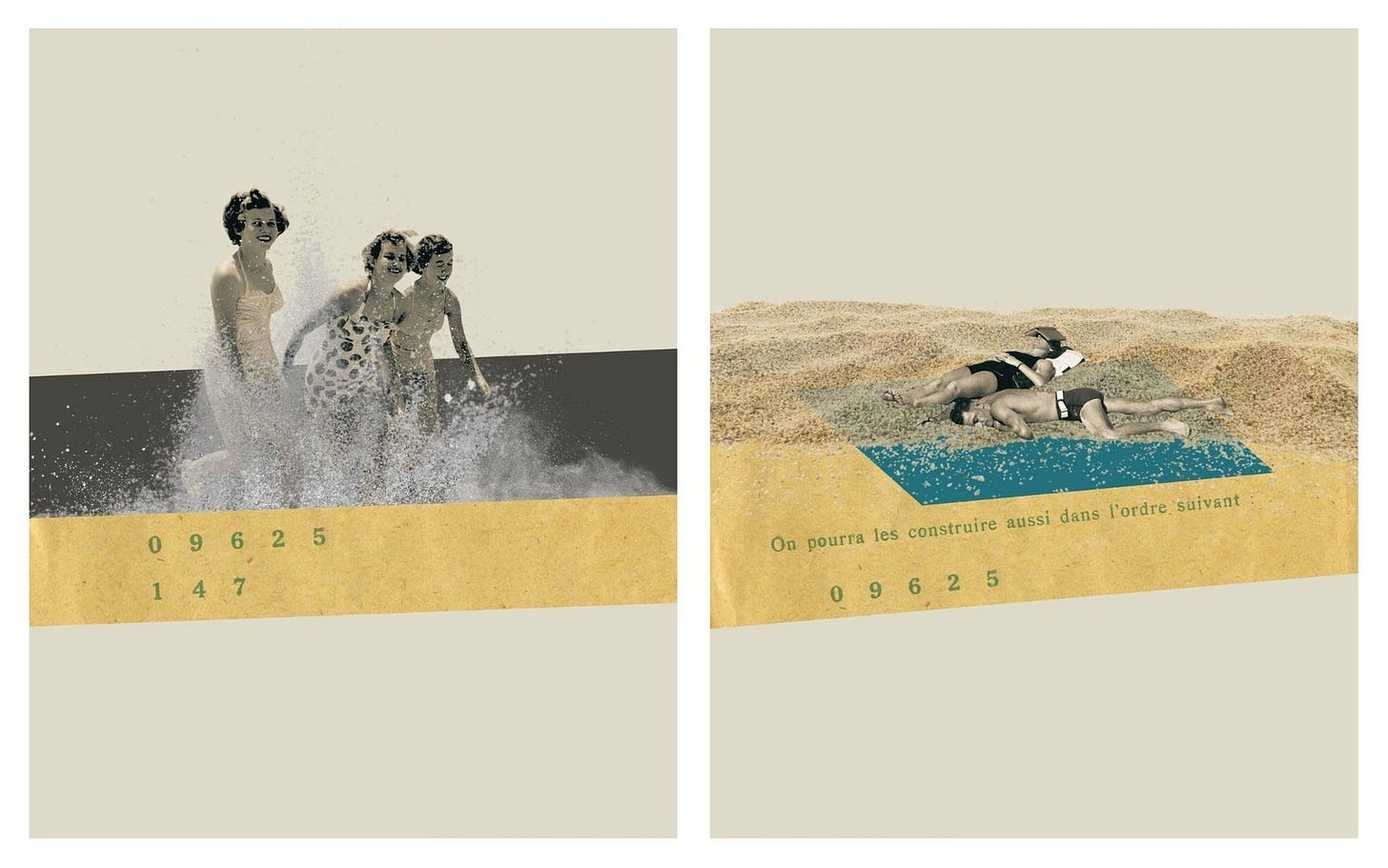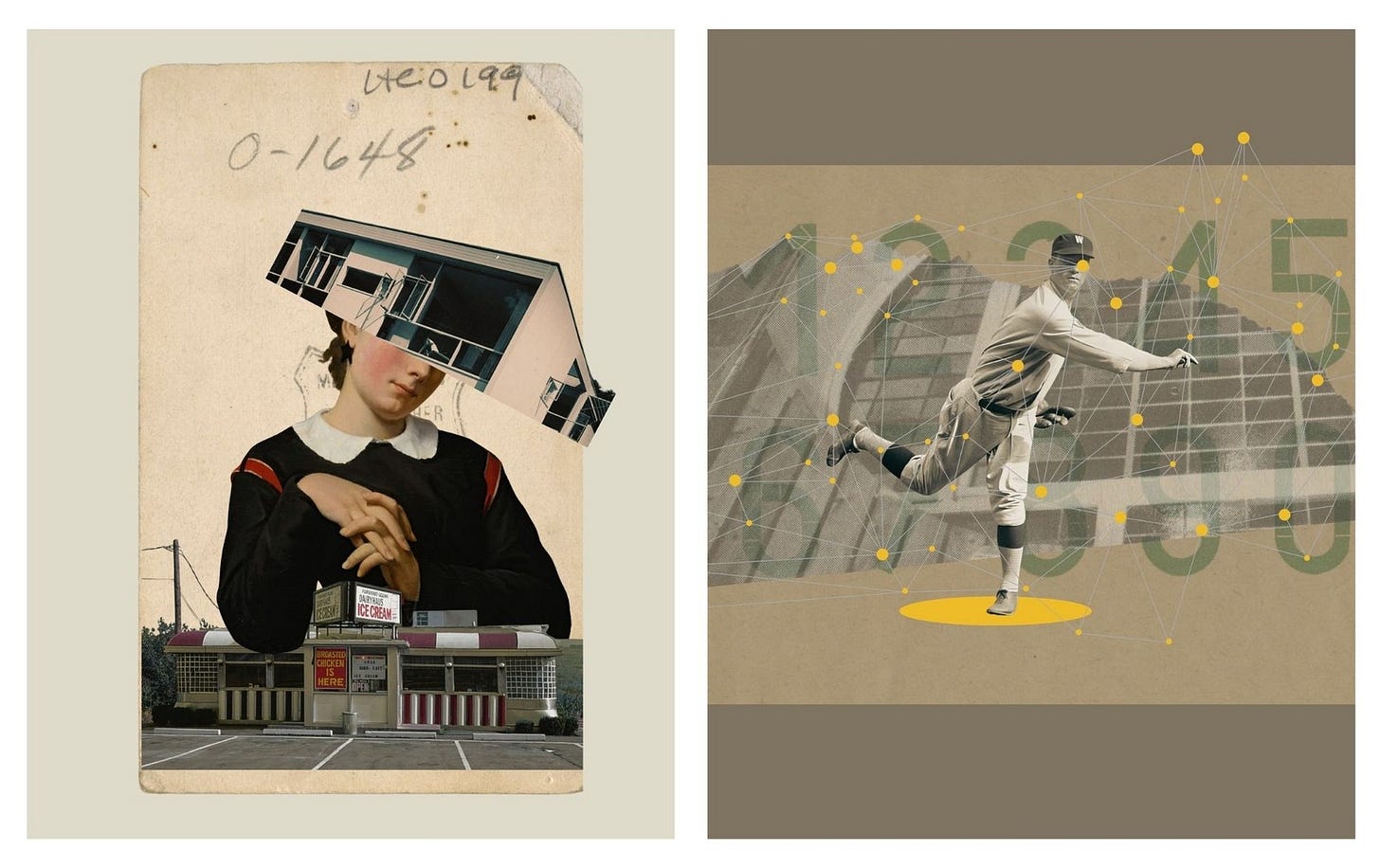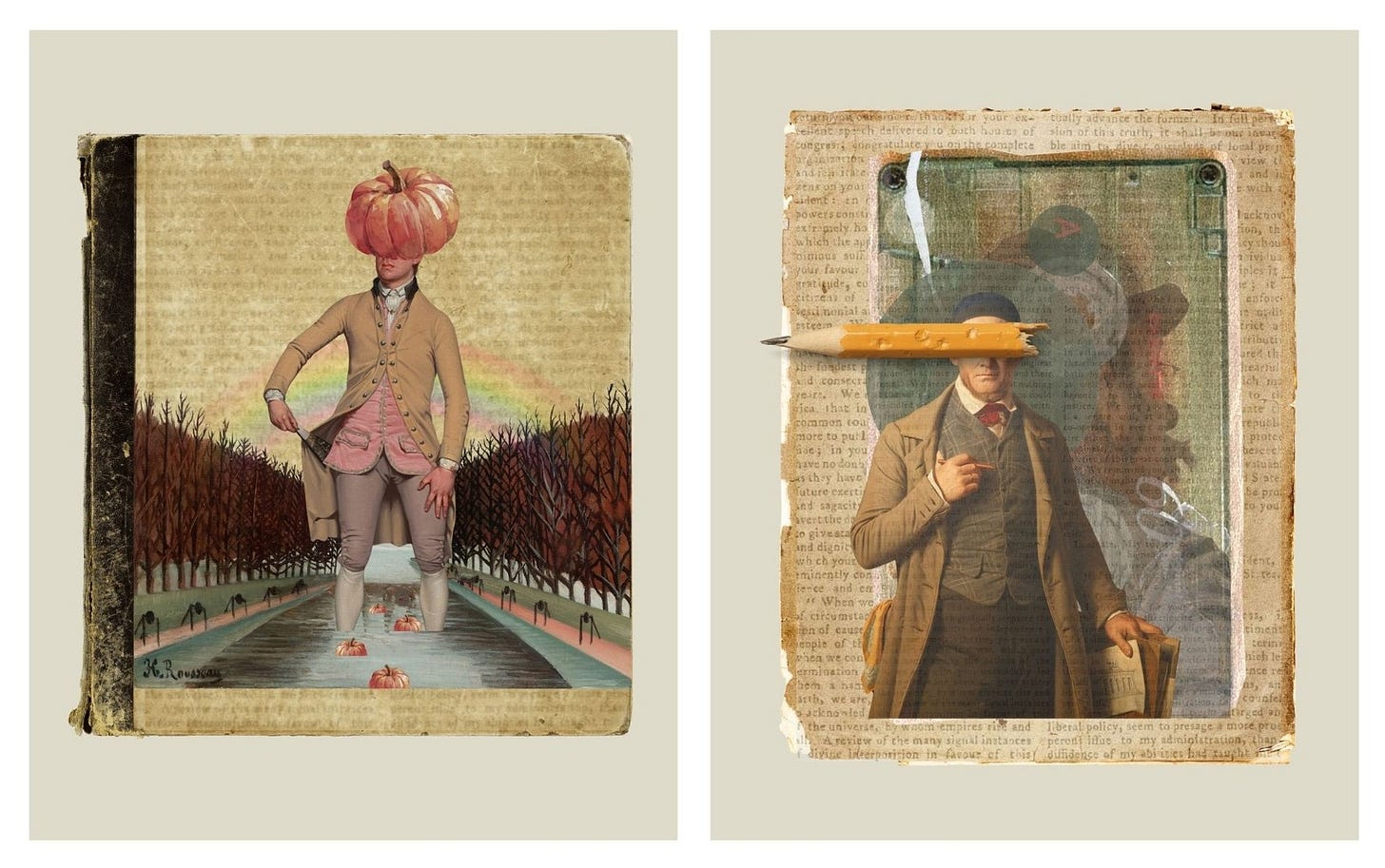I keep meaning to write essays in advance, but it doesn't come naturally. While journaling feels safe—free-writing in private, where grammatical errors don't matter—crafting something public-facing still makes me nervous: the structuring, the word-massaging, the lingering insecurity about my grammar (full disclosure: I use AI to copy-edit my work). Sitting with this discomfort, I realized it had been too long since I'd made time to collage just for play and exploration. Plus, my previous posts have been melancholy, so I switched gears and plunged right in.
For those new to Sundays with Stella, my collaging process is a hybrid of digital and analog—not because I ascribe to any particular methodology, but out of necessity. I don't have a studio or cabinets to house paper ephemera. Space is limited: I use either the table in the nook or spread out on the floor, and with both options, I have to clean up afterward. I don't have the luxury of closing a door and leaving my creative mess behind to return to later. Still, I don't let this limitation hinder my exploration. It doesn't replace anything—it simply allows me to keep working. My love for paper remains, and I intend to keep that feeling intact.
My current analog collages are usually typographical or abstract, and they're tiny works assembled on 4x6 or 5x7 inch paper. Sometimes they're standalone pieces; other times, I digitize and combine them with other elements using Canva.
Artvee.com had been on my radar as a collage resource. With its clean interface and easy browsing, I fell down a rabbit hole of figurative paintings by various unknown artists. Since incorporating found imagery like this was relatively new to me, using it as an entry point allowed fresh ideas to emerge. I think of these long-forgotten masterpieces as a sort of resurrection—breathing new life into them by creating visual conversations across time.
When I begin a collage, it's like getting into a small car and driving without a map. With only intuition as my guide, I pick up several pieces along the way. Usually, gestures and colors catch my eye. Sooner or later, patterns emerge and I follow them, though I also pick wild cards to add to the mix. Once space runs out and I can no longer fit anything, I make a stop at a hotel and try to make sense of what I've gathered. This is when I let my imagination swirl and attempt to make connections, however absurd they may be. Composition becomes my north star, followed by color harmony.
It's hard for me to say when a piece is done. I'm restrained when it comes to adding and layering. When something seems amiss, I tend to lean toward subtracting elements until the piece has some sense of balance and breathing space. Whether the collage comes together or falls apart, I get in the car and drive again.
A mindset of possibilities allows magic to happen, like the inclusion of the broken pencil in the collage above. I didn't see that coming at all! I noticed the man holding a pen, and then I stumbled upon the broken pencil. It made sense to echo it by combining 2D and 3D elements. I've used this technique before, but not often, so it still surprises me when everything clicks together. I've learned that coaxing something out of what's already there, rather than imposing a preconceived idea, gets me into a sustained flow.
Wherever I land—whether I've had failures, pieces that aren't quite there, or successful ones—what matters is the intent behind the process: stay joyful and engaged, and just have fun.
Play builds resilience—a quiet defiance and alchemy for our world in crisis and personal struggles. As George Bernard Shaw writes, "We don't stop playing because we grow old; we grow old because we stop playing." Even in small doses, it goes a long, long way.
Thank you for inviting me to join you every Sunday in your inbox. I am grateful and appreciative for spending a small part of your day with me. If you have the means to support Sundays with Stella, please consider becoming a paid subscriber. Those who contribute financially will ensure that this place of inspiration, creativity, and meaning remains free and open to all.
ANOTHER WAY TO SUPPORT SUNDAYS WITH STELLA
By request, I’ve created a support page where you can contribute in any amount—via credit card, PayPal, or Venmo. Your generosity helps keep this space open and accessible to all. Thank you, always, for reading.










Stella, I really enjoy how you see and make these super collages. Thank you for sharing!
Hi Stella,
The timing of your new post is synchronous. My dear friend Virginia has a new collage piece at The Center for Photography at Woodstock (CPW) in upstate NY. The exhibition is called simply `The Rose.' Curated by the artist Justine Kurland and curator Marina Chao. What i love about the show and your work is that they are integrative expressions of an iterative process of healing. Kurland wrote that collage is
'Radical and political by its cut-apart and dissonant nature [and] urges us to honor revision and reprisal as correctives for the skewed lenses that distort our worldview.” Iterative in this context refers to " where one thing turns into another, replacing hierarchies with cyclical, organic, and revolutionary energy." The healing, therapeutic or "corrective" aspect is "cutting, ripping, and rending apart the whole, necessitating the reparative act of gluing, binding, and assembling things into a new unity."
Though the `Rose' exhibition is "feminist collage," the healing process of artistic expression, including collage, as you know, is universal.
Your work is stunning, Stella, on Sundays and all days. Thank you for bringing expression to many who seek to identify and name their own experiences of suffering and joy.